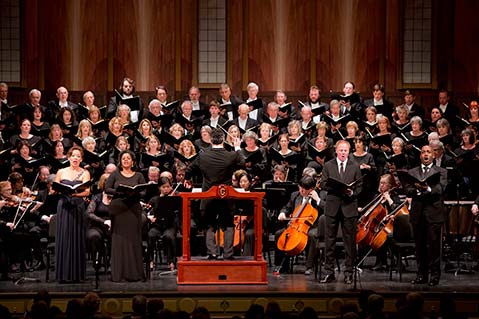Santa Barbara Symphony’s Season Opener
‘Rapture,’ Then ‘Joy’ with Beethoven’s 9th

“Rapture”, a short symphonic composition by contemporary composer Christopher Rouse, followed the orchestra’s rendition of the national anthem signaling that the 2016-17 season had begun. No one took a knee during either work. While Rouse identifies “Rapture” as his most unabashedly tonal composition, there’s nothing polite about it. Like Beethoven’s “Joy”, Rouse’s “Rapture” imagines a universal ecstasy that’s based in humanistic rather than religious sentiment. At a mere 13 minutes in length, “Rapture” is necessarily a ride on the ecstasy express, arriving at its destination flushed with the thrill of its own continuous acceleration.
As for the main event, the Symphony No. 9 in D minor, Op. 125 of Beethoven, there’s nothing else like it in all of music. As Kerry Candaele’s wonderful documentary Following the Ninth has shown, every performance of this monumental work takes on the paradoxical aura of a secular sacrament. We are fortunate in Santa Barbara to have a robust choral community on which to draw for these very special moments. In this instance, members of the Westmont College Choir, the Santa Barbara Choral Society, Quire of Voyces, the UCSB Vocal Program, and the San Marcos High School Madrigal Singers gathered to realize Beethoven’s music alongside soloists Jeanine De Bique, Nina Yoshida Nelsen, Benjamin Brecher, and DeAndre Simmons.
With so many ways to praise this true “symphony unlimited” available, I’ll take the road less traveled, and in honor of, among other things, Bob Dylan’s recent Nobel Prize, I nominate the “Ode to Joy” as the first great pop anthem. Before “Blowin’ in the Wind”, before “Let It Be”, there was Beethoven, who harnessed a lyric of universal relevance and secular wisdom to an unforgettable melody and then threw in a hook. We’ve been aiming that high ever since.



